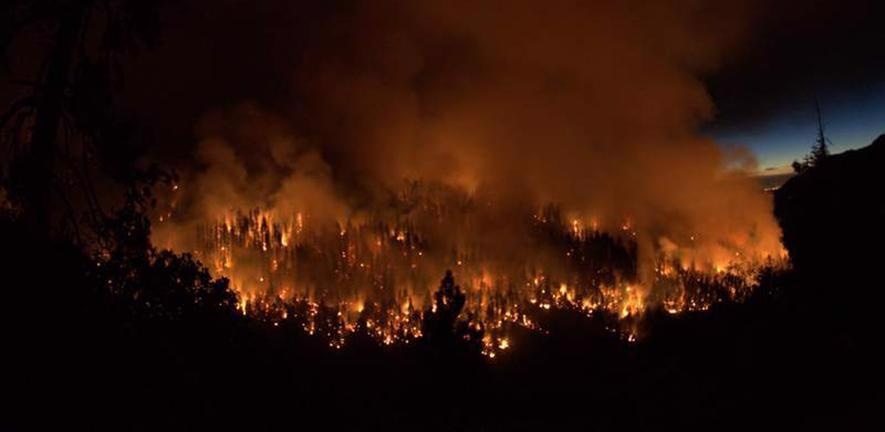Feb 26 2021
Several decades of data related to the effect of recurrent fires on ecosystems throughout the world have been analyzed by researchers from the University of Cambridge.
 Fire at Sequoia National Park, California. Image Credit: Tony Caprio.
Fire at Sequoia National Park, California. Image Credit: Tony Caprio.
Published recently in the Nature Ecology and Evolution journal, the findings of the study indicate that recurrent fires are inducing long term variations to tree communities and decreasing their population sizes.
Savannah ecosystems and regions with extreme dry or wet seasons were discovered to be the most sensitive to variations in fire frequency. In regions with moderate climate, trees tend to be more resistant. Recurrent fires do not damage those tree species much that have safety traits such as thicker bark.
Such effects only appear during the course of multiple decades—the impact of a single fire varies hugely from repeated burning over time.
The study has discovered that after a period of five decades, regions experiencing the most extreme yearly fires had 72% lower wood area—a surrogate for biomass—and 63% fewer individual trees compared to regions that had never experienced fires.
These variations to the tree community can decrease the long-term potential of the forest to store carbon, but may buffer the impact of fires in the future.
Planting trees in areas where trees grow rapidly is widely promoted as a way to mitigate climate change. But to be sustainable, plans must consider the possibility of changes in fire frequency and intensity over the longer term. Our study shows that although wetter regions are better for tree growth, they’re also more vulnerable to fire. That will influence the areas we should manage to try and mitigate climate change.
Dr Adam Pellegrini, Study First Author, Department of Plant Sciences, University of Cambridge
Previous studies have discovered that repeated fires decrease the levels of nutrients such as nitrogen present in the soil.
The new study shows that this can support slower-growing tree species featuring adaptations to enable them to live with less nutrients.
However, these tree species also retard nutrient cycling in the soil, as they tend to survive with whatever they have.
This can hinder the revival of the forest completely by decreasing the nutrients available for plant growth following an intense fire.
Wildfires play a highly crucial role in global carbon emissions. Fire burns 5% of the Earth’s surface annually and discharges carbon dioxide into the air equivalent to 20% of the fossil fuel emissions per year.
Previously, most of the carbon discharged by wildfires was regained as the ecosystems were regenerated. However, the more frequent fires in the last few years, forced by variations in climate and land use, do not always give time for this.
As fire frequency and intensity increases because of climate change, the structure and functioning of forest ecosystems are going to change in so many ways because of changes in tree composition.”
Dr Adam Pellegrini, Study First Author, Department of Plant Sciences, University of Cambridge
“More fire-tolerant tree species are generally slower growing, reducing the productivity of the forest. As climate change causes wildfires to become more intense and droughts more severe, it could hamper the ability of forests to recover - reducing their capacity for carbon storage,” Dr Pellegrini added.
The study is the biggest of its kind ever to be performed. The team examined data from a global network of 374 plots spread across 29 sites in four continents, where plots have undergone various intensities and fire frequencies for several decades.
The network covers a wide geographical range of ecosystems right from Australian and African savannahs and grasslands, to forests in North America and Europe. These are all the ecosystems that undergo natural burning, or would do if humans were not fighting fires.
This study was financially supported by the USDA National Institute of Food and Agriculture, and the Gordon and Betty Moore Foundation.
Journal Reference:
Pellegrini, A. F. A., et al. (2021) Decadal changes in fire frequencies shift tree communities and functional traits. Nature Ecology & Evolution. doi.org/10.1038/s41559-021-01401-7.